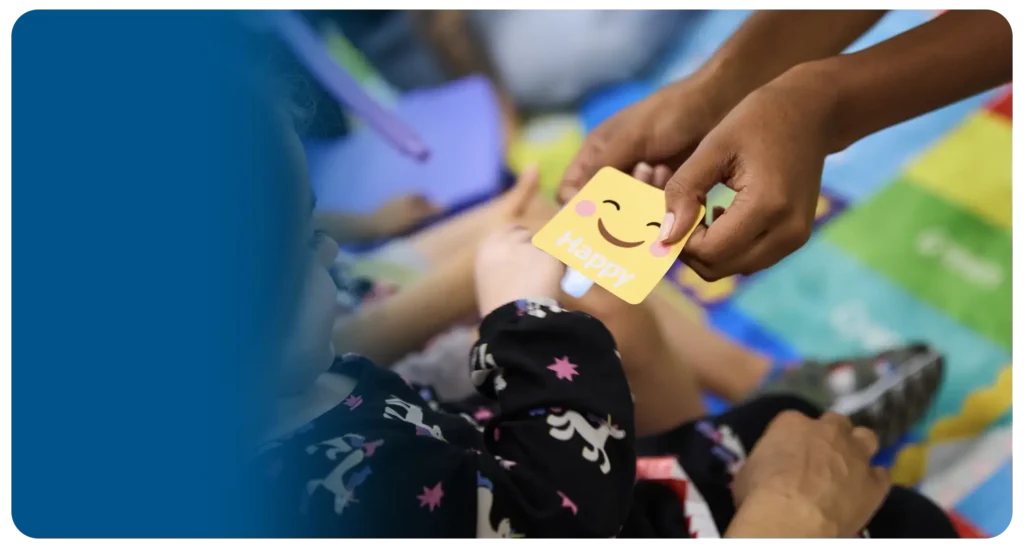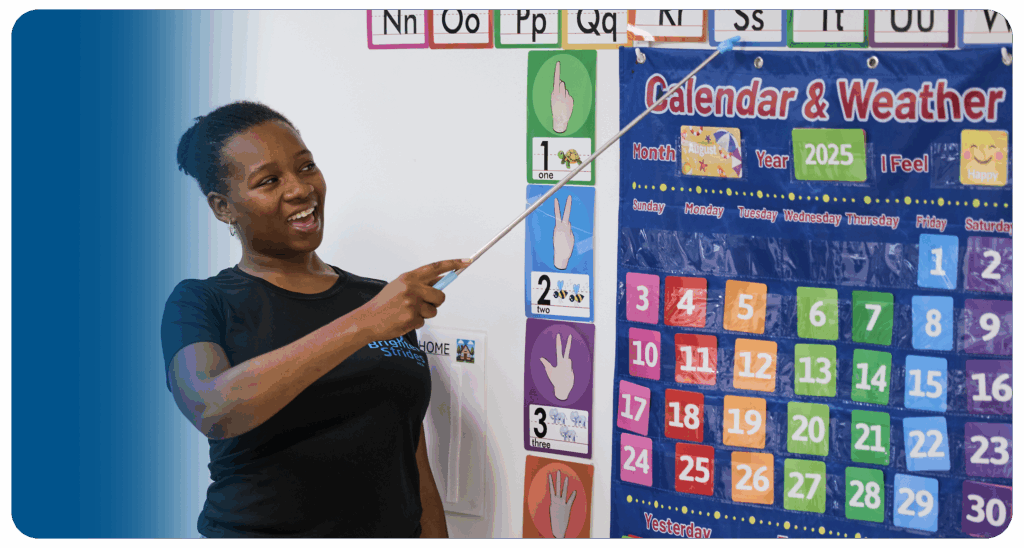Understanding Behavior Functions
In the field of Applied Behavior Analysis (ABA), behavior functions refer to the underlying purpose or reason behind specific behaviors. By identifying the function of a behavior, insights can be gained into what motivates an individual to engage in certain actions. This understanding is crucial for developing effective behavior intervention strategies and promoting positive behavior change.
Functions of Behavior
There are several common functions of behavior that are often observed in individuals. These functions serve as the driving forces behind certain behaviors. Recognizing these functions can provide valuable insights into the individual’s needs and the purpose their behavior serves. The five primary behavior functions are:
- Escape/Avoidance: Some behaviors are motivated by a desire to escape or avoid a particular situation or task. For example, a student might engage in disruptive behavior to avoid completing a challenging assignment.
- Attention-Seeking: Certain behaviors are performed to gain attention or interaction from others. This can include behaviors such as interrupting conversations or engaging in disruptive actions to attract attention.
- Tangible Reinforcement: Behaviors driven by a desire for tangible rewards or access to preferred items or activities fall under this function. For instance, a child may engage in a tantrum to obtain a desired toy or treat.
- Sensory Stimulation: Some behaviors are performed to seek sensory input or stimulation. This can include engaging in repetitive actions, such as hand-flapping or rocking, to satisfy sensory needs.
- Control/Rigidity: Behaviors within this function are motivated by a desire for control or a need for routine and predictability. Individuals may engage in rigid behaviors to establish a sense of order in their environment.
Importance of Identifying Functions
Identifying the function of a behavior is crucial for developing effective behavior intervention plans. By understanding the underlying purpose behind a behavior, practitioners, teachers, and parents can develop targeted strategies to address the root cause of the behavior and teach alternative skills.
Functional Behavioral Assessments (FBA) are commonly used to determine the function of a behavior. FBAs involve various methods, such as direct observation, interviews with parents, teachers, and practitioners, and functional analysis, to assess the impact of antecedents and consequences on behavior. This comprehensive assessment provides valuable information for designing individualized behavior intervention plans.
Collaboration among parents, teachers, and practitioners is essential in understanding and addressing behavior functions. By working together, insights, strategies, and progress can be shared to create a holistic and consistent approach to behavior management. This collaborative effort ensures a supportive environment for the individual and promotes positive behavior change.
In summary, understanding behavior functions is a valuable tool for professionals and caregivers. By recognizing and addressing the underlying function of behaviors, tailored behavior intervention plans can be developed, leading to positive outcomes and a supportive environment for all involved.
Functional Behavioral Assessment (FBA)
In the realm of understanding and addressing challenging behaviors, the functional behavioral assessment (FBA) plays a crucial role. An FBA is a systematic set of strategies used to determine the underlying function or purpose of a behavior. By identifying the factors that maintain the behavior, educators and professionals can design effective interventions to teach individuals new, more acceptable methods of achieving their goals.
Purpose and Process
The purpose of an FBA is to gain a deeper understanding of the function of a student’s behavior and the factors that maintain it. This understanding allows for the development of effective interventions tailored to the individual’s needs. An FBA is particularly useful when basic classroom interventions prove ineffective in addressing challenging behaviors.
The process of conducting an FBA involves several key steps. These steps help educators and professionals gather information and analyze the behavior in a systematic manner. The steps typically include:
- Identifying the Target Behavior: Clearly defining and describing the behavior of concern is essential. This involves specifying the behavior in observable and measurable terms. For example, instead of using a vague term like “aggression,” the behavior may be defined as “hitting peers during recess.”
- Collecting Data: Data collection involves systematically observing and recording the occurrence of the target behavior. This data provides valuable information about when, where, and under what circumstances the behavior occurs. It may be collected through direct observation, interviews, or checklists.
- Analyzing the Data: Once data is collected, it is analyzed to identify patterns and potential triggers or maintaining factors for the behavior. This analysis helps determine the function or purpose the behavior serves for the individual.
- Hypothesizing the Function: Based on the analysis of the data, hypotheses are formulated about the function of the behavior. Common functions include attention-seeking, escape from aversive situations, access to desired items or activities, or sensory stimulation.
- Developing an Intervention Plan: The final step in the FBA process involves using the gathered information and hypotheses to develop an individualized behavior intervention plan (BIP). The BIP outlines strategies and supports to address the challenging behavior effectively. The plan may include teaching replacement behaviors, modifying the environment, providing social supports, or implementing consequences and rewards.
By following these key steps, professionals can gain valuable insights into the function of a behavior and use that knowledge to create effective interventions that support positive behavior change.
Functions in Practice
To effectively address challenging behaviors, it is crucial to understand the functions that these behaviors serve. By identifying the underlying function or purpose of a behavior, professionals can develop targeted interventions. In practice, there are four common functions of behavior: attention-seeking behavior, escape behaviors, access to tangibles, and sensory stimulation.
Attention-Seeking Behavior
Attention-seeking behavior occurs when an individual seeks feedback or a response from others. This behavior can take various forms, such as crying, tantrums, or disruptive actions. Individuals engaging in attention-seeking behavior often desire interaction and attention from others. Ignoring problem behaviors is a key strategy in dissuading attention-seeking behavior. By withholding the desired attention, the individual learns that engaging in such behaviors will not result in the desired response.
Escape Behaviors
Escape behaviors occur when an individual wants to avoid or “escape” from a particular demand, situation, or task. This can manifest as running away, refusing to participate, or engaging in disruptive behaviors. Individuals exhibiting escape behaviors are attempting to avoid something they find unpleasant or challenging. One effective approach for addressing escape behaviors is the use of token systems, which provide designated time for both play and instruction. This helps individuals understand that completing tasks leads to more preferred activities.
Access to Tangibles
Access to tangibles is a function of behavior where individuals engage in specific behaviors to gain access to desired items or activities. This can include behaviors like requesting, demanding, or taking items without permission. Individuals engaging in this behavior are seeking items or activities that they find reinforcing. While it is acceptable to reinforce positive behaviors with tangibles, it is important to recognize that access to tangibles is a function of behavior and to promote appropriate ways of requesting or earning desired items.
Sensory Stimulation
Sensory stimulation is the fourth function of behavior, where individuals seek pleasant sensations or aim to replace discomfort. This behavior can manifest in various ways depending on the individual’s sensory needs. Examples include seeking tactile stimulation, repetitive movements, or self-stimulatory behaviors. Individuals engaging in sensory-seeking behaviors are often trying to regulate their sensory experiences. Understanding and addressing these sensory needs, such as providing appropriate sensory activities or tools, can help individuals find alternative ways to meet their sensory needs.
By recognizing and understanding these functions of behavior, professionals can conduct a comprehensive Functional Behavioral Assessment (FBA). An FBA is a systematic process used to determine the underlying function of a behavior. This assessment helps professionals develop targeted Behavior Intervention Plans (BIPs) that address the specific function of the behavior. By implementing interventions that directly target the function of the behavior, individuals can learn more appropriate ways to meet their needs and reduce challenging behaviors.
Implementing Behavior Intervention Plans (BIPs)
To address challenging behaviors effectively, it is crucial to develop and implement Behavior Intervention Plans (BIPs) that target the specific needs of individuals. BIPs are designed to replace problem behaviors with more appropriate and socially acceptable alternatives. Let’s explore the key aspects of developing effective BIPs and teaching replacement behaviors.
Developing Effective BIPs
The development of an effective Behavior Intervention Plan (BIP) involves a systematic approach that considers the individual’s needs and the function of their problem behavior. BIPs should focus on teaching replacement behaviors that serve the same function as the problem behavior, but in a more desirable manner [4].
When developing a BIP, it is essential to involve a team of professionals, including educators, behavior specialists, and relevant stakeholders. The team collaboratively assesses the individual’s behavior and identifies appropriate replacement behaviors that align with their goals and needs. The BIP should include clear and measurable objectives, along with strategies for implementing and monitoring the plan.
It is important to note that BIPs should not be reserved only for extreme behaviors. If a student’s behavior interferes with learning, regardless of severity, and is a manifestation of their disability, conducting an FBA and developing a BIP is required [4]. By using BIPs proactively when necessary, the needs of students can be better addressed.
Teaching Replacement Behaviors
The cornerstone of a successful BIP is teaching and reinforcing replacement behaviors that serve the same function as the problem behavior. This approach helps individuals develop more appropriate ways to communicate their needs and achieve their desired outcomes.
When teaching replacement behaviors, it is important to consider the individual’s strengths, capabilities, and preferences. The strategies and techniques used should be evidence-based and tailored to the individual’s unique needs and learning style. Positive reinforcement and modeling can be effective tools for teaching and reinforcing replacement behaviors.
Additionally, consistency in implementing the BIP across settings is crucial for success. All staff members who work with the individual should be involved in implementing the BIP, not just special educators and behavior interventionists. The BIP should clearly specify who is responsible for each aspect of the plan, ensuring consistency and promoting generalization of the replacement behaviors across different environments.
By focusing on teaching replacement behaviors, BIPs provide individuals with the skills they need to effectively manage their behavior and accomplish their goals. This collaborative and proactive approach promotes positive outcomes and empowers individuals to succeed in various settings.
Collaborative Approach
Addressing behavioral challenges through functional behavior assessment (FBA) and behavior intervention plans (BIPs) requires a collaborative approach involving education professionals, parents, and caregivers. By working together, insights, strategies, and progress can be shared to create a holistic and consistent approach to behavior management.
Role of Education Professionals
Education professionals, such as behavior analysts, school counselors, and special educators, play a vital role in the FBA process within educational settings. They have the expertise to conduct FBAs, analyze behavior data, and develop effective BIPs. These professionals collaborate with various stakeholders to gather information, conduct assessments, and implement interventions tailored to the individual needs of the student.
During the FBA process, education professionals may utilize surveys to collect self-reported information from students and parents. Additionally, they may engage in discussions to explore the student’s behavior, relationships, emotions, and approaches to conflict resolution. By taking a comprehensive approach, education professionals aim to gain a deeper understanding of the functions behind the student’s behavior and develop effective intervention strategies.
Involvement of Parents and Caregivers
Parents and caregivers are integral members of the collaborative team when it comes to addressing behavior challenges through FBA and BIPs. They possess valuable insights into the student’s behavior and can provide observations and information that helps professionals gain a more holistic view of the student’s behavior patterns. Collaborating with the school and actively participating in the FBA process can foster a deeper understanding of the child’s struggles, allowing for more tailored interventions and supports.
Parents and caregivers can actively participate in the FBA process by observing their child, sharing their observations with the school, and keeping track of behavior patterns through tools such as frustration logs. This information contributes to a more accurate assessment of the behavior’s function and aids in the development of effective intervention strategies.
By involving parents and caregivers in the collaborative process, a unified and consistent approach to behavior management can be established. This collaboration allows for the sharing of knowledge, strategies, and progress, resulting in a comprehensive support system for the student both at home and in educational settings.
Legal and Practical Considerations
When it comes to conducting Functional Behavior Assessments (FBAs) and implementing Behavior Intervention Plans (BIPs), there are important legal and practical considerations that must be taken into account. These considerations help ensure that the assessment and intervention processes are carried out effectively and in compliance with relevant laws and regulations.
Legal Requirements for FBAs and BIPs
Under the Individuals with Disabilities Education Act (IDEA), it is legally required to conduct a full Functional Behavior Assessment (FBA) when a student requires a Behavior Intervention Plan (BIP) to meet their needs. FBAs are typically conducted as part of a school evaluation for special education, when new behavior concerns arise with students who have an Individualized Education Program (IEP) or a 504 plan, or in certain school discipline situations. Furthermore, federal law mandates an FBA in specific instances related to student discipline, disabilities, law enforcement, weapons, drugs, or serious injury.
To ensure compliance with legal requirements, it is essential to follow proper procedures when conducting an FBA. This involves collecting data from a variety of sources, such as interviews, records review, behavioral checklists, and observations, to develop a comprehensive understanding of the behavior in question. Classroom observations, while valuable, should not be the sole source of information for completing an FBA. The use of multiple data sources helps to create a more accurate and comprehensive assessment.
Implementing Plans Across Settings
Once an FBA has been conducted and a BIP developed, it is crucial to ensure consistency in implementing the plan across various settings. All staff members who work with the student should be responsible for implementing the Behavior Intervention Plan, not just special educators and behavior interventionists. It is important to clearly specify in the BIP who is responsible for each aspect of the plan.
Implementing the BIP consistently across settings helps to maximize its effectiveness and promote positive behavior change. Whether it is in the classroom, on the playground, or during extracurricular activities, maintaining consistency in the application of the BIP ensures that the student receives consistent support and reinforcement. This consistency also helps the student generalize their skills and behaviors across different environments.
To facilitate successful implementation across settings, it is important to provide adequate training and support to all staff members involved. This may include professional development sessions, regular check-ins, and ongoing communication to address any concerns or questions that may arise.
By adhering to legal requirements and implementing plans consistently across settings, the Functional Behavior Assessment (FBA) and Behavior Intervention Plan (BIP) processes can be carried out effectively, ensuring that students receive the support they need to succeed.
References
- https://www.plymouth.edu/eportfolio/artefact/file/download.php?file=195853&view=34357
- https://iris.peabody.vanderbilt.edu/module/fba/cresource/q2/p04/
- https://www.sunnydayssunshinecenter.com/blog/the-four-functions-of-behavior-determining-what-is-maintaining-your-childs-behavior
- https://www.kennedykrieger.org/stories/linking-research-classrooms-blog/myths-and-facts-about-fbas-and-bips
- https://study.com/academy/lesson/collecting-data-for-functional-behavioral-assessments.html
- https://www.understood.org/en/articles/functional-assessment-what-it-is-and-how-it-works





